Instructional Series
This site will be closing soon as its content has moved to Tāhūrangi.
2024 titles are available on Tāhūrangi. Use the filters to find specific series.
Find Literacy resources at Tāhūrangi - Literacy.
Welcome to the English medium literacy instructional series teaching and learning resources for years 1 to 8.
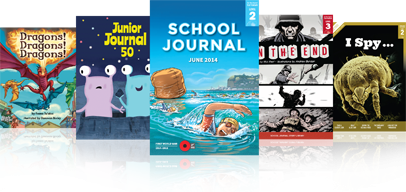
- Gold
- Purple
- Green
- Orange
- 2
- 3
- 4
- 1
- 4
- 5
- 6
- 7
- 8
- 3
- 2
- English
- Social Sciences
- The Arts
- Health and Physical Education
- Science
- Technology
- Learning Languages
- Mathematics and Statistics
- Non-fiction
- Fiction
- None
- Nature of science
- Living world
- Nature of technology
- Geometry and Measurement
- Planet Earth and beyond
- Statistics
- Critique evidence
- Engage with science
- Articles
- Stories
- Poems
- Plays
Search results
78 items - Showing 71 - 78
-
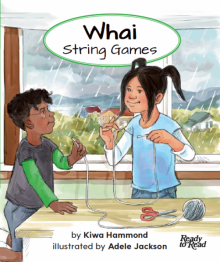
Whai (String Games)
by Kiwa Hammond
illustrated by Adele Jackson
In this heart-warming story, Mahi teaches Hani how to make shapes with a piece of string. Hani struggles at first, but with Mahi’s patient teaching and his perseverance, he is eventually successful. This story gives an insight into a traditional game common to many cultures and demonstrates the concept of tuakana–teina (an older sibling or cousin helping a younger one).
Green 3
#LFH
-

Kūtai Fritters
by Charlene Mataio
In this simple fictional recount, a young Māori boy, Kalani, describes an event that will be familiar to some students: gathering kaimoana with the whānau. The story demonstrates important aspects of the relationships within the whānau, including respecting elders and sharing of knowledge and tikanga (cultural concepts) associated with gathering kaimoana. The story illustrates the passing on of knowledge and experience from older whānau members (Koro, Dad) to the next generation.
-
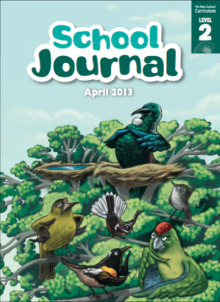
Ask Eddie
by André Ngāpō
What does it mean to be Māori? In this first-person narrative, Eddie’s classmates expect him to be familiar with a pōwhiri because he is Māori. But that’s not how Eddie feels, and an upcoming visit to a local kura fills him with anxiety. The support of a sensitive teacher, an encouraging mother, and a wise kaumatua enable Eddie to express his culture in a beautiful painting. When his class visits the kura, he takes his place on the paepae with pride.
-
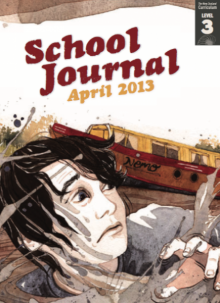
Tīvaevae
by Teremoana Hodges
In this well-illustrated article, we learn about the origins, meanings, and construction of tīvaevae, the beautiful hand-sewn Cook Islands Māori bedspreads. The text provides opportunities for students to be exposed to and engage with the positive values that are associated with the concept of akano‘anga Kūki‘Āirani (Cook Islands culture). These are highlighted through the description of the time, hard work, and skill involved in making tīvaevae and the beauty of the finished product.
-
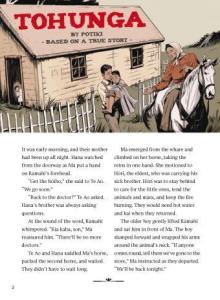
Tohunga
by Potiki
illustrations by Andrew Burdan
This intense and dramatic “slice of life” story recounts the time when a mother had to take her sick child in secret to a tohunga. It is set after 1907, when the New Zealand government made it illegal for tohunga to practise rongoā Māori. “Tohunga” provides rich material for both Māori and non-Māori students to explore themes of cultural similarities and differences.
-
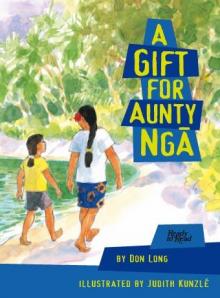
A Gift for Aunty Ngā
by Don Long
illustrated by Judith Kunzlé
In this sequel to A Quilt for Kiri (Purple), Kiri visits Rarotonga with her parents to meet Aunty Ngā and gives her a tīvaevae that she and her mother have made. This is a rich personal-experience narrative with many layers of meaning, which lends itself to expressive reading and can be returned to many times. These notes include background information about tīvaevae and some aspects of Cook Islands culture.
Gold 1
-
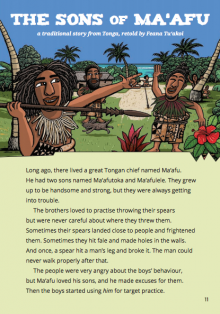
The Sons of Ma'afu
a traditional story from Tonga, retold by Feana Tu‘akoi
illustrations by Fraser Williamson
Two brothers with a reputation for trouble try to redeem themselves by carrying out some perilous tasks. Despite their best efforts, the brothers fail to impress the other villagers. Instead, they are banished to live in the heavens, where they can still be seen. Tongan students will relate to a traditional story from their culture. Some students may also be able to make connections to the importance of stars for navigation. A final section provides factual information about the constellations mentioned in the story.
-
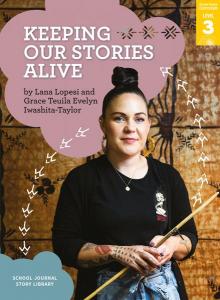
Keeping Our Stories Alive
by Lana Lopesi and Grace Teuila Evelyn Iwashita-Taylor
This book explores Samoan tatau in two parts: the first part is an interview with tattooist Tyla Vaeau and the second is a comic that retells how tatau came to Sāmoa. The interview with Tyla explores her Samoan culture, how she became a tufuga tā masini (electric tattoo artist), the process and practice of tattooing, and the significance of being a woman working with tatau. The comic retells the origin story of how tatau – and in particular the malu – came to Sāmoa through Tilafaigā and Taemā. The book links to the article “For the Ancestors”, published in School Journal, Level 3, November 2019, which recounts one woman’s experience of receiving her malu.
Information and tips for using comics in the classroom:





 Literacy Online home
Literacy Online home
